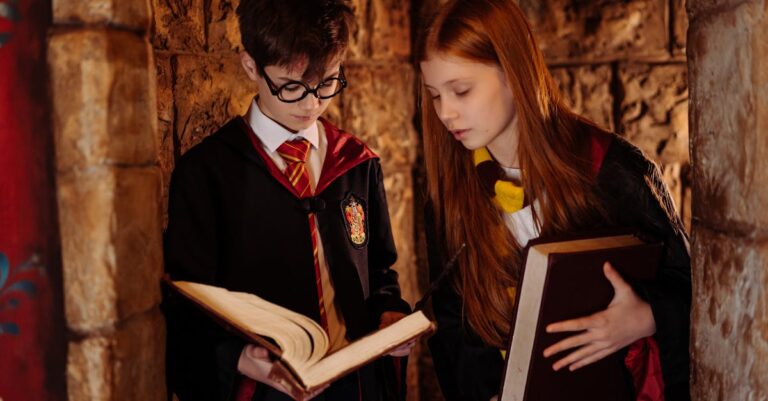
## The Cartographer’s Echo
Dust motes danced in the violet shafts slicing through Old Man Tiber’s workshop. The light, fractured seven ways over Aestinwy’s sun prisms, tasted like ozone and regret. I ran a thumb across the vellum stretched taut on my frame – another blankspace, stubbornly refusing ink.
“Still chasing ghosts, Silas?” Tiber’s voice rasped, the sound like dry leaves skittering on slate. He didn’t look up from the clockwork bird he was dismantling, tiny gears spilling across his workbench.
“They’re not ghosts, Tiber. They’re *fading*. The nodes are disappearing faster now.” I tapped the blankspace with a stylus. “Like someone’s erasing history, piece by agonizing piece.”
He snorted. “History’s a slippery thing anyway. Palefolk memories, all tangled up in moodweyes and echo-stone. What matters is what’s *now*. The shalewings are the problem.”
I ignored his pragmatism. He’d lost faith after his wife, Lyra, had her recollections…shifted. The shalewings fed on memory, yes, but they didn’t merely steal it; they *rewrote* it. And the nodes—the world-points tethered to the strongest empathic resonances—were the last defenses against complete unraveling.
My task, commissioned by the dwindling Council of Cartographers—a mostly ceremonial body these days—was to ghostwrite a map. Not with ink and lines, but by tracing the fading empathic signatures themselves, locating these nodes before they vanished. A map of what *was*, to save what *could be*.
“The Council’s requests are getting desperate,” I murmured, sketching a fragmented skyline from memory. Cradle Vale, once vibrant with choral-sing lineage, now felt…hollow.
“Desperation’s a familiar scent in Aestinwy,” Tiber said, carefully reassembling the bird’s wing. “They want a miracle, Silas. You’re offering them parchment.”
He wasn’t wrong. The tools were archaic: a resonator crafted from echo-stone, brushes woven with moodweed fibers, vellum treated in the light of all seven suns. I wasn’t a sorcerer, only a scholar with a knack for cartography and an unsettling sensitivity to the empathic weave.
The resonator hummed against my temple, a cool vibration that tasted like lavender and loss. I focused on the Cradle Vale, picturing its rolling hills, the shimmering rivers, the pale stones of the ancient singing circles. The signature flickered—weak, fragmented, almost gone.
“Damn it.”
I pushed back from the frame, rubbing my eyes. The shalewings were accelerating their assault. They weren’t just affecting individuals now; they were targeting entire regions.
“Anything?” Tiber asked, glancing up.
“A fragment. Deep in the Whisperwood. But it’s…corrupted. Like a false memory layered over something real.”
He raised an eyebrow. “False memories? That’s new.”
“The shalewings aren’t just erasing. They’re *building* something. A new history, I think.”
The thought sent a chill down my spine. The Council had dismissed it as hysteria, blaming the anomalies on natural decay. But I felt it in my bones: this wasn’t decay. This was an invasion.
The Whisperwood lived up to its name. Twisted, gnarled trees clawed at the violet sky, their leaves rustling with unsettling whispers. The air hung thick and heavy, tasting of mildew and regret. I navigated the maze-like paths, guided by the diminishing signature in my resonator.
After hours of searching, I found it: a clearing bathed in an unnatural twilight. In the center stood a monolith of pale stone, pulsating with a sickly green light. Etched into its surface were glyphs—not the elegant script of the palefolk, but something alien and unsettling.
“What is that?” I breathed, my voice barely audible.
The resonator in my hand spasmed, throwing off a wave of nausea. I stumbled back, clutching my head.
“A nexus.” A voice rasped from behind me.
I spun around, hand instinctively reaching for the stylus tucked into my belt. Old Man Hemlock, a disgraced cartographer exiled years ago for his unorthodox theories. He was gaunt and wild-eyed, clutching a tattered scroll.
“Hemlock? What are you doing here?”
He ignored me, his gaze fixed on the monolith. “They’re rewriting the choral-sing lineage. Replacing it with…silence.”
“The shalewings?”
He shook his head. “Not just them. Something *older*. Something that predates the prisms, even.”
He unfurled his scroll—a chaotic map filled with frantic scribbles and unsettling symbols. “The buried chords. The original resonance of Aestinwy. They suppressed it centuries ago, fearing its power.”
“Suppressed by whom?”
He pointed a trembling finger at the monolith. “The Keepers. The first Cartographers. They believed order required control. But they were wrong.”
He explained that the choral-sing lineage wasn’t merely a form of music; it was the foundation of Aestinwy itself—the empathic weave that connected all palefolk. The Keepers, fearing the chaos of unfiltered resonance, had fragmented it, replacing it with a controlled system. The shalewings weren’t the cause of the unraveling; they were a symptom—a release valve for the suppressed energy.
“The monolith is amplifying the false memories,” Hemlock said, his voice urgent. “It’s erasing the original chords. We have to stop it.”
“How?”
He pointed to a series of glyphs on the monolith. “There’s a counter-resonance hidden within them. A fragment of the original chord. We need to activate it.”
I hesitated. This was madness. A disgraced cartographer’s theory, a counter-resonance hidden within an alien monolith. But the alternative—the complete unraveling of Aestinwy—was unthinkable.
“What do we need?”
Hemlock handed me a small, obsidian flute. “This belonged to Lyra, Tiber’s wife. She was gifted with a rare sensitivity to the chords.”
“You think her resonance can unlock it?”
He nodded. “It’s our only hope.”
I raised the flute to my lips, feeling a strange connection to Lyra’s memory – a fleeting image of her singing in the sunlight, her voice clear and resonant. I blew into the flute, producing a wavering note that echoed through the clearing.
The monolith shuddered, its green light intensifying. I continued to play, improvising a melody based on Hemlock’s instructions – a fragmented chord, haunting and dissonant.
The air crackled with energy. I felt a surge of power coursing through my veins, overwhelming and terrifying. The false memories swirling around the monolith began to dissipate – replaced by a faint, ethereal glow.
Then, silence.
I lowered the flute, breathing heavily. The monolith pulsed with a gentle, blue light – its alien glyphs now glowing with an ancient power.
“Did it work?” I asked, my voice barely audible.
Hemlock smiled grimly. “The counter-resonance is active. But it’s only a temporary fix.”
He pointed to a series of fading nodes on his map. “The energy is spreading, reconnecting the fractured chords. But it’s unstable. We need to amplify it, spread it across Aestinwy.”
“How?”
He looked at me with a steely gaze. “We need to ghostwrite a new map, Silas. A map of the original resonance. A map that will awaken the palefolk and restore their lost lineage.”
I stared at my hands, feeling the weight of responsibility settle upon me. This wasn’t just about saving history; it was about reclaiming a lost identity.
“Then let’s begin.” I said, my voice firm. The violet shafts of light sliced through the Whisperwood, and for the first time in a long while, I felt a flicker of hope. The task was daunting, but the fate of Aestinwy—and the echoes of its past—hung in the balance.
I returned to Tiber’s workshop, clutching Hemlock’s map and Lyra’s flute. The air smelled of ozone and regret, but there was a new scent now—the faint whisper of renewal.
“Tiber,” I said, my voice urgent. “I need your help.”
He looked up from his clockwork bird, a flicker of curiosity in his eyes.
“What is it?”
I unfurled Hemlock’s map, revealing the chaotic scribbles and unsettling symbols.
“We need to amplify the counter-resonance,” I said, my voice firm. “Spread it across Aestinwy.”
He stared at the map for a long moment, his expression unreadable. Then, he sighed and set down his tools.
“Let’s see what miracles we can build.” He said, a flicker of determination in his eyes.
We worked through the night, Tiber using his clockwork skills to construct resonators capable of amplifying the counter-resonance, and me ghostwriting a map not on vellum, but woven into moodweed fibers – a tapestry of light and memory.
The task was grueling, each node requiring precise calibration and a connection to the fading empathic signatures. But with each completed section, I felt a surge of hope – a sense that we were not merely chasing ghosts, but awakening something ancient and powerful.
The final piece of the map was Cradle Vale, once vibrant with choral-sing lineage, now hollow and fragmented. As I traced the fading signature, I felt a sudden surge of emotion – a fleeting image of Lyra’s voice singing in the sunlight.
I closed my eyes and blew into Lyra’s flute, producing a haunting melody that echoed through the workshop. The map came alive, glowing with an ethereal light – a tapestry of memory and hope.
“It’s ready.” I said, my voice barely audible.
Tiber nodded and activated the resonators, sending waves of counter-resonance spreading across Aestinwy. The violet shafts of light pulsed with a new energy – a symphony of memory and hope.
The fate of Aestinwy hung in the balance, but for the first time in a long while, I felt a flicker of peace – a sense that we had awakened something ancient and powerful. The echoes of the past were not merely fading; they were being reborn.
The next morning, a strange silence fell over Aestinwy. The shalewings disappeared, their haunting whispers replaced by a gentle hum. Palefolk began to gather in Cradle Vale, drawn by an unseen force.
I stood beside Tiber and Hemlock, watching as they began to sing – a fragmented melody at first, then growing stronger with each passing moment. The choral-sing lineage was being reborn – a symphony of memory and hope.
As the music swelled, I felt a surge of emotion – a sense of connection to the palefolk and their lost lineage. The echoes of the past were not merely fading; they were being woven into a new tapestry of memory and hope.
The fate of Aestinwy was uncertain, but for the first time in a long while, I felt a flicker of peace – a sense that we had awakened something ancient and powerful. The echoes of the past were not merely fading; they were being reborn, and for the first time in a long while, I felt like I truly belonged. The map of the original resonance was complete, and Aestinwy—and its lost lineage—was being reborn.


